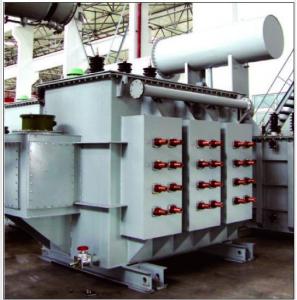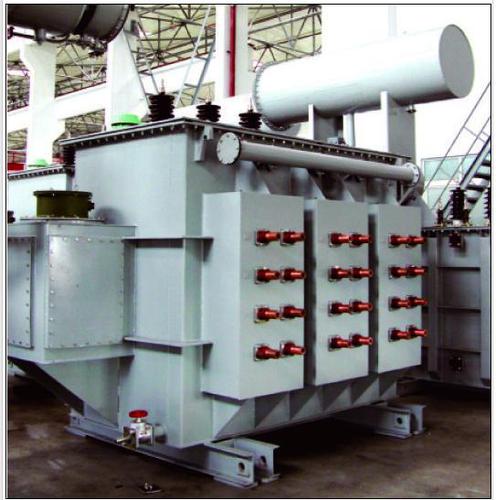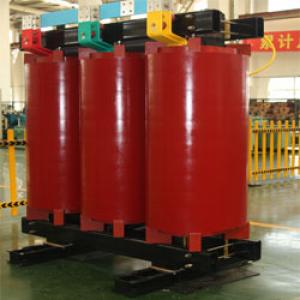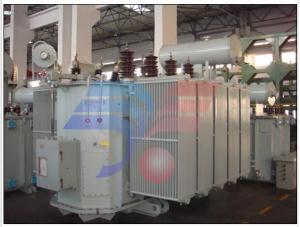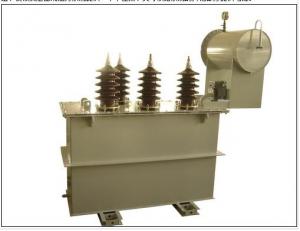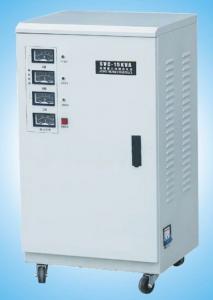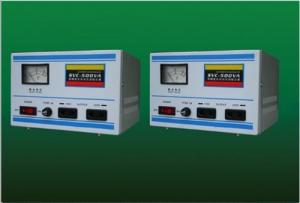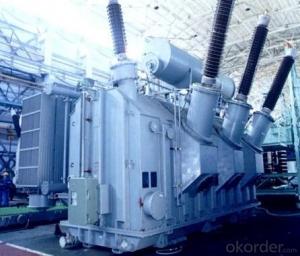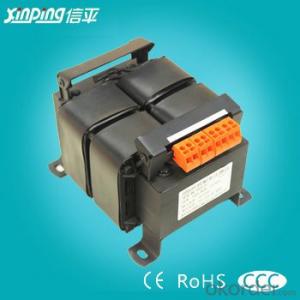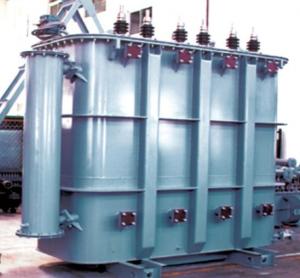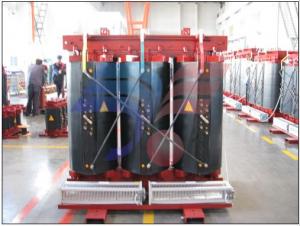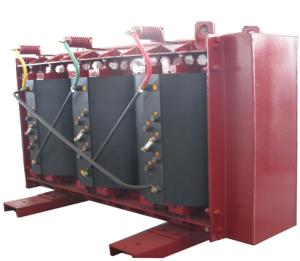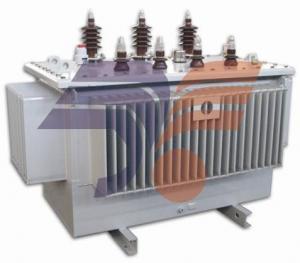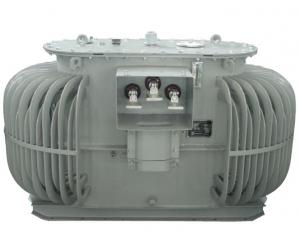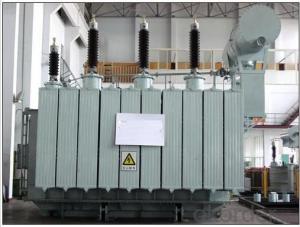Furnace transformer of HS9 HSZ9 HSP9 series
- Loading Port:
- China Main Port
- Payment Terms:
- TT OR LC
- Min Order Qty:
- -
- Supply Capability:
- -
OKorder Service Pledge
OKorder Financial Service
You Might Also Like
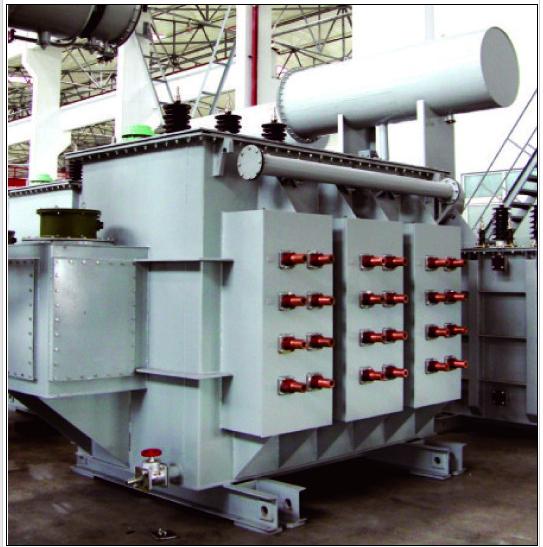
Furnace transformer of HS9,HSZ9,HSP9 series
1. Product introduction
The furnacetransformer is a transformer for power supply to furnace electricalsource. It is used to reducea voltage from a high voltage to an operational voltage needed by furnace.
Accordingto many different types of furnaces,there are many varieties of furnace transformer to fit it.At present, the furnace transformers produced by ourcompany are: electric arc furnace transformerused for steel-making furnace (including on-load and no-loadhigh voltage and enclosing reactortype); the furnace transformers (single - -phase, three-phase on-load and no-load voltage regulating) usedfor smelting various ferroalloy, silicon compounds, mineralssuch as calcium carbide, are all the low-loss energy-saving products.
2. Technicalparameter
Furnacetransformer of HS9 HSZ9 HSP9 series
Rated Capacity (kVA) | With series reactor | Without series reactor | ||||||||||||
Primary voltage (kV) | Second voltage (kV) | Rated second current (A) | Voltage regulation mode | Label of connection | Impedance of short-circuit (%) | Series reactor | No-load loss(Kw) | load loss(Kw) | No-load current(%) | No-load loss (Kw) | Load loss (Kw) | No-load current(%) | ||
Rated Capacity (kVA) | Reactance voltage drop (%) | |||||||||||||
630 800 1000 | 6 6.3 10 10.5 11 | 200 1700 116 98 | 1819 2309 2887 | No load voltage regulating | Dd0 Dy11 | 8-9 | 120 150 190 | 19 | 2.4 2.7 3.1 | 8.6 11 14 | 3.0 2.9 2.9 | 2.2 2.7 3.1 |
11.0 13.5 16.0
| 3.0 2.9 2.8 |
1250 1600 2000 | 210 180 121 104 | 3437 4399 5499 | 200 260 320 | 16 | 3.6 4.1 4.6 | 17.5 22 27 | 2.6 2.5 2.4 | 3.7 4.6 5.6 | 18.5 24 28 | 2.6 2.5 2.4 | ||||
2500 3150 | 220 190 127 110 | 6561 8267 | 280 350 | 11.2 | 5.2 6.0 | 32 39 | 2.3 2.2 | 6.7 8.0 | 34.5 41.5 | 2.3 2.2 | ||||
4000 5000 | 240 210 139 121 | 9623 12028 | 340 360 | 8.5 | 7.6 8.4 | 46 54 | 2.1 2.0 |
|
|
| ||||
6300 8000 | 260 240 210 139 | 13990 17765 | 7-8 | 430 460 | 5.7 | 11.8 15.0 | 63 74 | 1.9 1.8 |
|
|
| |||
HSZ9 series 35kV on-load voltage regulatingelectric-arc-furnace transformer technical parameter
Type | Primary voltage (kV) | Secondary voltage | Secondary level voltage (V) | Rated secondary current (A) | Voltage regulating levels | Label of connection (%) | impedance of short-circuit (%) | Cooling | No-load loss (Kw) | Load loss (Kw) | No-load current(%) | |
Constant power | Constant current | |||||||||||
10000 | 35 38.5 | 280-240 | 240-100 | 10 | 24056 | 19 levels, first 5 levels are constant power output and last 14 levels are constant current output | Dd0 Yd11 YNd11 | 7-8 | OFWF or OFAF | 20 | 130 | 1.4 |
12500 | 314-270 | 270-116 | 11 | 26729 | 23 | 150 | 1.3 | |||||
16000 | 353-35 | 305-157 | 12 | 30287 | 28 | 180 | 1.1 | |||||
20000 | 392-340 | 340-158 | 13 | 33962 | 6-7 | 32 | 210 | 1.0 | ||||
25000 | 436-380 | 380-184 | 14 | 27984 | 39 | 240 | 0.9 | |||||
31500 | 489-425 | 425-201 | 16 | 42792 | 45 | 290 | 0.8 | |||||
40000 | 547-475 | 485-223 | 18 | 4819 | 52 | 350 | 0.7 | |||||
50000 | 610-530 | 350-250 | 20 | 54467 | 61 | 410 | 0.7 | |||||
63000 | 673-585 | 585-288 | 22 | 62176 | 68 | 480 | 0.6 | |||||
80000 | 760-660 | 660-310 | 25 | 69982 | 80 | 580 | 0.6 | |||||
- Q: I have a bulb that currently uses a 120V primary to 6V secondary transformer. The load is a 30Watts. I would like to know what transformer I could use to power 8 bulbs (6v 30W each) ? Thanks. How can I calculate that?
- Assuming you wire the bulbs in parallel. You need a similar transformer (6v secondary) but one that is rated at 240 watts (or a bit more), 40 amps. Note that the current will be 40 amps and will need quite a heavy wire, #4 or 5. You could also put the bulbs in series, and would need a 48 volt secondary, still at 240 watts. You would have problems of any series string, if one bulb goes out, they all go out. You can also use parallel series combos, 3 pairs, or 2 strings of 3 each as a compromise. edit. Later thought of another alternative that may help. Get a transformer with a 12vCT 240W secondary. Wire like you would 2 phase house wiring, 3 bulbs to each outside terminal, and all 6 to the CT. This means the wire only has to handle 20 amps and can be smaller, and you will not have the series string problem. 12VCT transformers are fairly common. Or if you can find it, and the wiring is still a problem, get a transformer with 2 secondaries each of 12VCT at 10 amps.
- Q: How we can check the output wattage of any voltage transformer? For example if we buy a voltage stabliser for television or A/C, how we can be certain that the output watts provided by the stabiliser will suit our appliance? Is there any device to check the output watts, if yes, then how to?Please help.
- Watts is the volts x amps. You will know the supply voltage and you can use an amp meter to find out the amps. For example 230V x 3A is 690 Watts.
- Q: Halo4 - love the series, Halo 3 is my favorite, hated Reach. not sure if Halo 4 is more like halo3 or more like reach, will not buy if abilities are includedBlack Ops 2 - BLOPS was my favorite shooter, I will probably get this unless they lower the health to MW2/MW3 standards and they don't fix SMGsTransformers FOC - War for Cybertron was one of the best games I've ever played, but they made Dark of the Moon which was a really bad shooter, and I'm not sure if FOC will be bad as wellWhat would you suggest?
- I would say BLOPS 2 because I have not played any of the other games prequels. That is because I play on ps3 so I am unable to play Halo and Transformers never interested me. Plus I know if there is an error in BLOPS 2 Treyarch will fix it to the best of their abilities unlike IW's take on development which is we have your money already so we don't care.
- Q: I need to know the details of TRANSFORMER OUTEGE, if possible an equations related ,or any sources for getting idea on this .Pls help.THank u.
- Means that someones going without any electicity tonight. A Transformer changes voltage. As in, The Thermostat in most homes workes off 24 volts. A Transformer will take 120 volts and drop it down to 24.
- Q: I heard somewhere that Steve Jablonsky's orchestral score to the new Transformers movie (which is fabulous!) would eventually be released on CD. Does anyone know anything about this?
- Hey Emily, People don't know the difference between Soundtrack and Score. Jablonsky's score hasn't been released yet. According to Soundtrack , it's in the works and will be released soon. Who knows when. Here's my source: soundtrack /features/article/?id235 Good luck!!!
- Q: hi , i got some electronics frm asia( like camera and hair dryer) , which can only be used in 220 volts. which converter or transformer sud i use which changes 110 volt to 220 volt ? and where can i get it ? i searched for it . but i found converters that change 220 v to 110 volt :(
- Yes, You can buy a converter that allowes you to use Asian Ele. Item (220V) in USA (110V). It is very easy to use. One end you will fix to the power outlet and another end with your item. Size? you can keep in your puce
- Q: i have just pulled out the flayback transformer from a tv there are many pins at the bottom and 3 wires at the top. i just want to make some good sparks. one wire is orange, one red and the other red with a sucker cap on the end. can i plug the transformer straight into the wall socket. i hear it needs a saw tooth voltage, is this already built in. please help i just want some good sparks.
- A 'flyback' transformer won't do anything but blow the breaker if you plug it into the wall. They're designed to run at 15,750 Hz. and yes, they do couple a 'sawtooth' waveform out to the horizontal deflection coils of the 'yoke' around the base of the CRT which deflect the electron beam to produce an image. If you want some -great- sparks, go out on the 'net and look ou plans for a 'Tesla Coil'. I've built a couple of those that would draw an arc several inches long. And since they're very low-current (on the secondary side) they're quite safe to play with. HTH, Doug
- Q: A transformer is used to step down a voltage of 11KV to 220V. Given that the transformer has 3200 turns in the primary, calculate the number of turns in the secondary coil.Another transformer is used to further to step down 220V to 110V. its input current is 3A and the output current is 5.6A. Calculate its efficiency
- Q1. Let the number of primary turns Np; number of secondary turns Ns. Let the primary voltage Vp; secondary voltage Vs. Then fundamental transformer theory gives us: Vp/Vs Np/Ns. So: Ns (Vs/Vp).Np i.e.: Ns (220 / 11,000).3200 64. The turns ratio is 50:1 Q2. The product of volts and amps is called the V-A of the transformer: volts x amps. An ideal transformer would generate zero losses in transferring electrical energy from primary winding to the secondary winding. But there is no such thing as an ideal transformer: the transference of energy means that some energy gets lost: in heat, eddy currents and hysteresis losses. For this Q, the input VA 220 x 3 660 V-A, and the output V-A 110 x 5.6 616 V-A. The V-A efficiency (V-A out) ÷ (V-A in) 616 / 660 0.933 93.3 % N.B. This is not the same as the watts efficiency, power in ÷ power out: the V-A efficiency does not take power factor into consideration.
- Q: i want to know the actual lyrics for the Transformers theme that was re-covered by Mute Math. i heard that they changed some of the lyrics but i would like to know the exact changes, thanks.
- Whoa she just gave you the best answer!!
- Q: actually I've many questions :) I've opened many mobile chargers and I didn't found the usual (bulky) transformer . I found only a small transformer and I think it called smps transformer.1- I can't understand how bulky transformers can be replaced by small ones! what is the idea ?2- are smps transformers connected directly to 220 volt like the bulky transformers ? if no, what is the design of the circuit that makes small transformers are able to be connected to 220 volt ?3- do smps transformers make a voltage drop like the bulky transformers ? or they have another job ?4- some smps transformers have 4 pins and the other have 5 or 6 pins, I know it should have 2 pins for input and 2 pins for output, why some of therm have more than 4 pins ?Thanks in advance, I hope i'm not bothering you because of my many questions :)
- Take a look at Farady's laws of induction. You will see that the voltage induced in a conductor is dependant mainly on the strength of the magnetic field and the speed at which the magnetic field changes, in the case of a transformer, that is the supply frequency. So, if we take a transformer and run it at a much higher frequency we can expect a given transformer to produce much more power, or we could make it smaller as it requires fewer turns on both the primary and secondary, this is what happens in a switching PSU. John m has explained the rest.
Send your message to us
Furnace transformer of HS9 HSZ9 HSP9 series
- Loading Port:
- China Main Port
- Payment Terms:
- TT OR LC
- Min Order Qty:
- -
- Supply Capability:
- -
OKorder Service Pledge
OKorder Financial Service
Similar products
Hot products
Hot Searches
Related keywords
